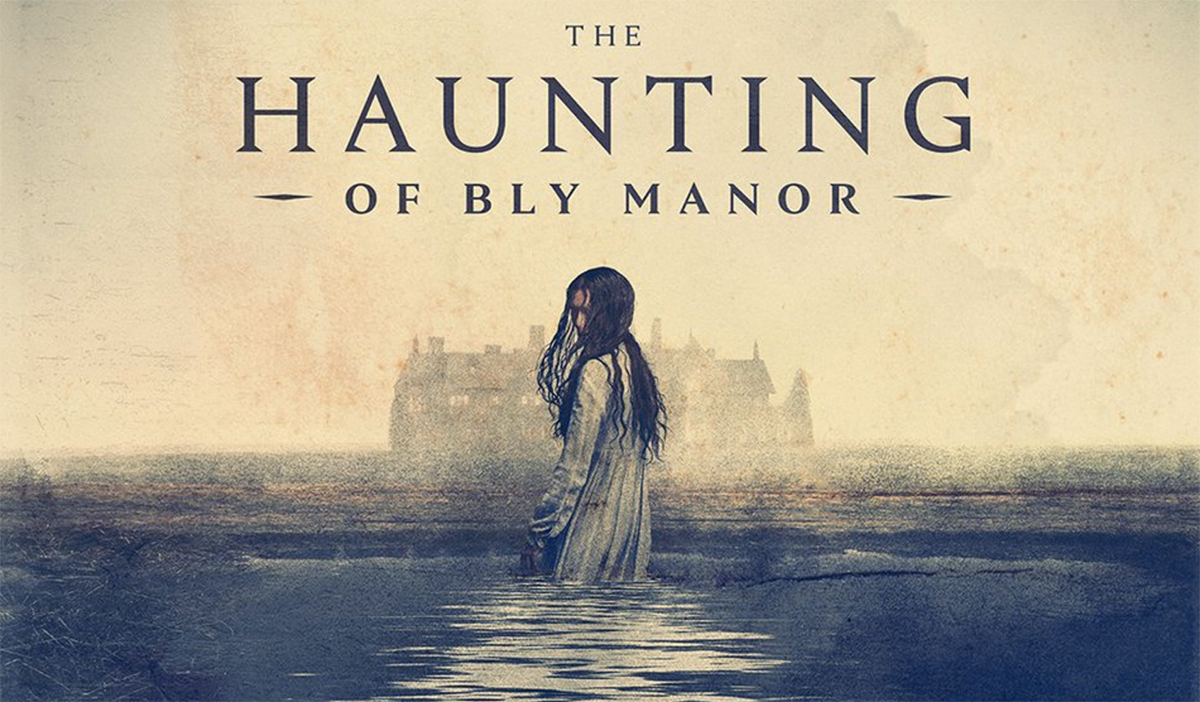Horror takes a back seat in season two of The Haunting
The Haunting of Bly Manor (Bly Manor) is the second installment in Netflix’s The Haunting anthology, following season one, The Haunting of Hill House (Hill House). Hill House was based on a book of the same name by Shirley Jackson (of The Lottery and grade 10 English fame), while Bly Manor is based on The Turn of the Screw by Henry James. There is no narrative continuity between the two seasons, but they have the same creator, Mike Flanagan, and much of the same cast. While both seasons clearly have a high production value and feature outstanding performances and innovative cinematography, Bly Manor feels very much like a sequel, suffering from a mild case of second season syndrome. Where Hill House felt inspired, Bly Manor sometimes sags into a technical exercise in writing narrative parallels and non-linear storytelling. But, for fans of Gothic horror — or just fans of Hill House — there is still lots to love.
While Hill House follows the Crain family in 2018 as they deal with the effects of growing up in a house that tried to kill them, The Haunting of Bly Manor follows Dani Clayton, an American teacher running from her past in 1980s England. She takes a job as a nanny for two small children, Miles and Flora, at the titular country house, but it quickly becomes apparent that the scene is not as bucolic as it ought to be. Dani brings her own ghosts to the already haunted Bly, and must try to keep the children safe with the help of the family’s other employees: the gardener, Jamie; the chef, Owen; and the housekeeper, Mrs. Grose.
The supernatural element in Bly Manor is more structured and intelligible than that of Hill House, mostly because it’s a more conventional ghost story. In Hill House, there are ghosts, but the monster is the house itself. Overall, despite Bly Manor’s disturbing subplots dealing with loss of self, loss of control, and unfinished business, it’s less spooky than Hill House because its monsters are people, and we can understand hurt, angry people much easier than we can understand an intrinsically evil house. But even Bly Manor acknowledges that it is not a true horror like Hill House; in its final episode, a character who has been listening to the season’s narrator informs her that she “set it up wrong, just in the beginning” by calling it a ghost story. The character, a bride getting married in Bly Manor the next morning, says, “It’s a love story” — and she’s right.
Bly Manor is an anthology of love stories that all happen to take place in the same house. It features no less than five romantic storylines, as well as familial love stories. On the other hand, Hill House is a story about a family’s shared grief, and that makes it feel more cohesive since its backstories shed light on the characters’ relationships to one another. By comparison, Bly Manor’s backstories, though they’re deftly told and heart-wrenching, set up individual characters well, but since many characters meet for the first time on screen, they don’t seem quite like they’re a part of the same story. This is exacerbated by the fact that some episodes seem dedicated to revealing the story of a particular character — for example, episode four for Dani and episode five for Mrs. Grose. Jumping from backstory to backstory may have been too confusing to spread across multiple episodes since the main plot is already mostly non-linear, but I think it would have better highlighted the common themes across each character’s story and improved the pacing.
While Hill House seemed to move steadily toward its climax, Bly Manor continually feels as though it’s revving the engine, never quite getting over the start line until the last couple episodes. Only then do we begin to learn why the house is haunted and who the ghosts actually are. However, all of Bly Manor’s storylines are neatly resolved, and its themes nicely crystallized in the final few scenes; the finale is the conclusion of the first episode rather than a response to events in the middle of the season.
Although Bly Manor doesn’t quite live up to the standard set by the first season of The Haunting, it is far from a failure. Hill House also made use of non-linear storytelling, but Bly Manor’s interwoven flashbacks disorient the viewer, mirroring the characters’ experience and keeping us on our toes; despite other pacing problems, the focus and care put into Hill House’s 17-minute long take that moved between the past and the present has been more evenly spread across Bly Manor’s nine episodes. And, though the love stories felt more discrete than the single story of the Crain siblings, they are all touching and well-developed — don’t let a lukewarm review trick you into thinking I didn’t sob my way through the final episode.
If Flanagan can recapture the technical success of Bly Manor and the cohesive, character-focused brilliance of Hill House in future installments of The Haunting, the growing pains of season two will be well worth it.


